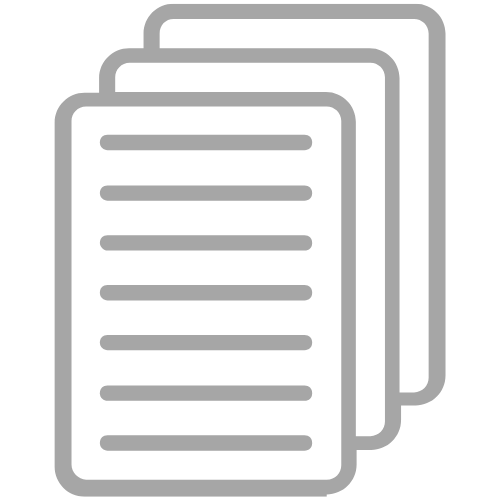Cover letters tend to get a bad rap. So much so that when it’s time to write one, you spend most of your time thinking, “ Are cover letters necessary in today’s job market? Will anyone even read it? Isn’t writing a good resume enough?”
Well, here’s the thing. Writing a cover letter is still an important component of a winning job application. In fact, according to a 2017 Jobvite study, 26% of recruiters still find cover letters to be important when making a hiring decision.
And, remember it’s not just recruiters who review your application. In a study by CareerBuilder, 49% of surveyed employers said that they pay more attention to candidates who include cover letters with their resume.
So, in this post, I am going to answer your question about how long a cover letter should be. But I’m also going to show you what information you should include and share some tips on writing a cover letter for beginners.
That way, your cover letter isn’t just the right length, but it also sends the following message to the hiring manager – that you deserve an interview ASAP!
Ready to make that happen? Let’s jump right in!
How Long Should A Cover Letter Be?
Your cover letter should be concise. Generally, that means 250-500 words. Only 3-4 main paragraphs. And never longer than a page.
That’s it! Not more. Not less. Occasionally, an employer may request your cover letter to be of a different length. But that’s rare.
You know what’s more important, though? The contents! The details of your experience and achievements that show you can succeed at the job. After all, that’s the real goal of any cover letter: to present yourself as the ideal candidate.
What do you need to include to achieve that goal? Let me show you!
What To Include In A Cover Letter
It doesn’t matter what kind of job you’re applying for. Your cover letter isn’t a letter of interest, appreciation, or a rehash of what information is already on your resume.
Your cover letter is a sales pitch! But what are you selling? And who are you selling it to?
Well, to start, you’re selling the hiring manager the idea that you deserve an interview! Here’s a formula to write a cover letter that helps you do that:
Paragraph #1: Hook Introduction
A lot of cover letter templates start the same. You know what I’m talking about? It’s always something like: “Dear Hiring Manager: I’m writing to apply for x position at ABC Company. I think I’m a good fit because…”.
Now, if you’re a strong match for the job, you might be able to get away with this. But I wouldn’t recommend it. It’s too boring and predictable.
Instead, start with something that stands out. The best option tends to be to start with a story that hooks the reader’s attention. A story about what? Perhaps it’s a story about your experience using the product or a quick anecdote that shows you’re aligned with the company’s mission.
Of course, you’ll still need to talk about your relevant experience and skills. That’s the focus of the next part!
Paragraph #2: Sales Pitch
Now that you’ve got your reader hooked and wanting to know more, it’s time to go for the “sale”. In other words, it’s time to highlight your most relevant skills, experience, and achievements.
It’s also time to demonstrate you’ve done your research on the company. What are some of the company’s current pain points? What role does the available position have in solving those problems?
You’ll sell yourself best if you can show how you’ve worked to solve similar problems in your previous jobs and handle any potential objections to your application.
This last point is particularly important if you’re looking to change careers, find a job in another state, or any other situation where the hiring manager might have doubts about whether you’re the best fit. This paragraph of your cover letter is one of the best places to address those doubts directly.
Paragraph #3: Closing and Call-to-Action
By now, you’ve piqued the hiring manager’s interest. And you’ve made your “sales pitch” that matches your skills and experience to the company’s goals. Now, it’s time to make it clear exactly what you hope happens next.
So, yes, follow the standard advice: restate what makes you a good fit for the job and thank them for considering your application. But also seal the deal. How? Mention and include a link to a relevant Value Validation Project that further demonstrates how you’d succeed in the role if hired!
How To Title A Cover Letter
Once your cover letter is done, there’s just one last thing you need to get right: the title of the file and email.
This may seem trivial. But you don’t want to get it wrong because it can take away from all the other work you put into your cover letter!
Your best bet is to stick to something where your name is easy to identify and find later on. So, any of these formats will do the trick:
- FirstName_LastName_Cover Letter
- FirstName_LastName_NameofCompany_Cover Letter
- FirstName_LastName_JobTitle_Cover Letter
Key Takeaways
Yes, your cover letter needs to be short and concise. But it also needs to work like a sales pitch that leaves no doubt why you’re the perfect candidate for the job.
To do just that, use the tips and information I’ve shared here as your cover letter checklist:
- Is your cover letter 250-500 words?
- Is it 3-4 paragraphs long?
- Do those paragraphs include a hook introduction, your ‘sales pitch’, and a clear call-to-action?
- Did you say everything you need to in one page or less?
- Did you title your cover letter to be easy to find and identify your name?
Do all that and you should be good to go!
But maybe you also want to see some examples and templates of cover letters that check all of those boxes and more. If so, next head over to my in-depth guide on how to write a job-winning cover letter that will help you land job offers at your dream companies!
And when your cover letter is ready, do yourself a few more favors before you press submit. Make sure you’re using a professional email sign-off, following these LinkedIn profile tips, and using a job-winning resume template!




































